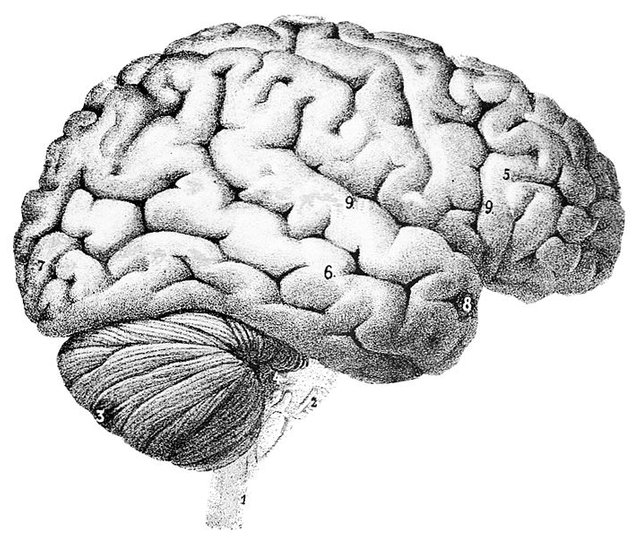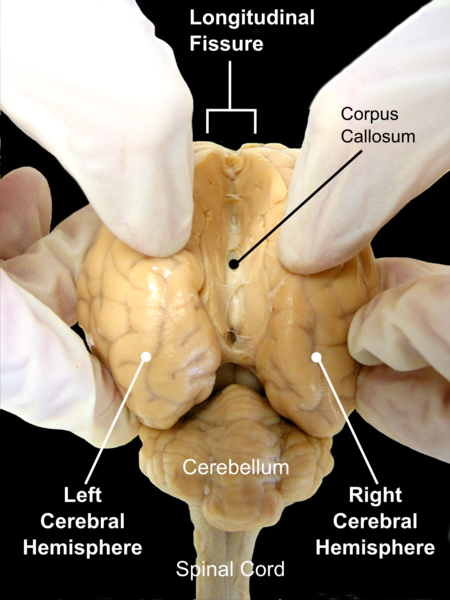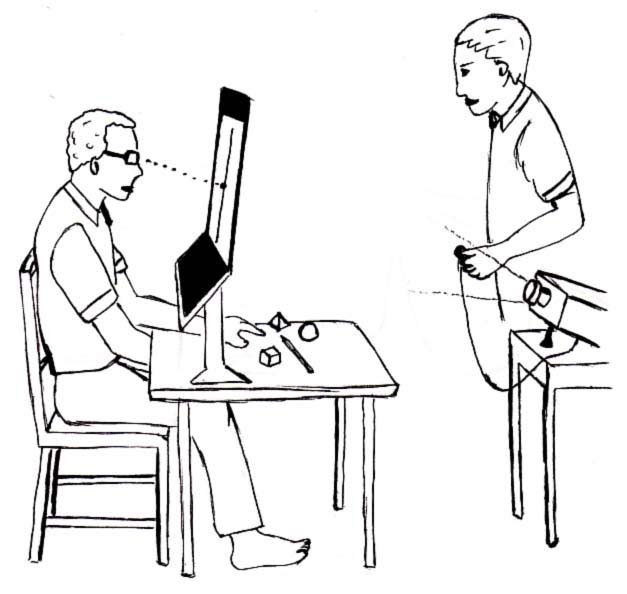The Mechanical Mind - The Split Identity Between the Left and Right Sides of the Brain (Part 2)
Carrying out a systematic inquiry for the purpose of defining the exact meaning consciousness seems like an incredibly difficult task. Many well-educated people on fields like philosophy and psychology participate in the controversy that leads to disagreements in the subject. While there is no need to summarize the history of confusion on this topic, let us take some time to examine the mind, and its profound relationship with the brain.
We can start with thinking about what it would be like to be a rat. My concern here is not about the rat, but how we can define consciousness from this thought experiment. Thomas Nagel in his famous article insists that an organism - humans, bees, bacteria, apes etc; is conscious “if and only if there is something that it is like to be that organism - something that it is like for the organism.” This statement to me is both dazzling and trite. All you have to do is think about exchanging experiences with an organism if you will be left with any experience at all. No matter how indefinable of vision, sound, feelings, perception etc, that is how consciousness is defined relative to that organism.
The truth is, whatever is the full definition of consciousness in the expression of living things, the distinction amidst it and unconsciousness depends on internal experience. Either it is all dark for creatures, or the bulb is on.
Neuroscience has progressed in its discoveries that it now has findings that diminish the long-established version of the definition of souls. One of this groundbreaking results in 1950, published by neuroscientists revealed insights about a phenomenon called the "SPLIT BRAIN".
Where are we in our heads?
The human brain is divided into two parts, the left and the right hemispheres. We do not fully understand why our brains are divided into two parts, but this should not be strange to us because some other body parts are divided into two categories as well, to perform their jobs and we know some the reasons for this.
Every vertebrate brain has this feature of the brain being in parts of left and right, the two parts are connected to each other by a band of nerve tissue between them known as Corpus Callosum, and it is the biggest fibre linking the right and left hemispheres of the brain. We also do not completely understand how placental animals like human came to have evolved these connecting fibres. The nerve fibres, as we used to think, are not there just to hold the two parts of the brain in place, they are there for a more interesting reason.
Some patients, due to their medical conditions such as serious epilepsy, have had their corpus callosum fibres cut as a way of curing their ailments. This split phenomenon was established by a well-renowned scientist known as Roger W. Sperry who won a Nobel prize for his work on the subject. His work has profoundly brought psychology and other sciences insights on how the mind works. He found out that even if the patient acts completely normal after the surgery, the now-separated left and right hemispheres begin to function independently. They automatically begin to store independent memories, learn separately, have different intentions and seems to have independent states of consciousness.
This split phenomenon happens due to the disconnection between the two brains as a result of cutting those fibres for the treatment or for experiments (using other animals). Take the eye for an example, the right eye transfers information of sight to the left side of the brain and the left eye transfers information to the right side too. That means both parts of the brain rely on those fibres to pass out information to themselves and make sense of the world. The more speechless hemisphere (the right) can point to the written answers to written questions using the left hand.
To understand better the implication of this phenomenon let’s look at this experiment.
Take a split-brain patient, cover his left eye and show his right eye a word like apple for a few seconds. After this is done, ask the subject who will be speaking from his left brain (the brain involved in the organization of speech) to call out what he has just seen, and he will tell you that he did not see anything. Ask the subject to use his left hand (which is completely controlled by the right brain) to pick out what he did not see from a set of items and he will pick the apple. Tell the subject to call out the name of the object which is now in his left hand making sure he does not see it with his left eye, (using the left brain for language) he will an odd response like; Oooh yeah uhm, I ate apples last week so I just decided to pick it up.
After going through files upon files on different experiment related to split-brain patients, it is hard to agree that the individual still has one personality, ‘Think’ about it. Everything about the experiments shows that the one silent intelligent mind resides in the right part of the brain - and the left part is not aware of his existence. This double mind phenomenon is made even more obvious as we discover that the two independent brains can do separate physical tasks. Giving both hands of a split-brain patient a pen to draw, the two hands will do the task simultaneously as if there are completely two different artists working on the same drawing. Sometimes, split-brain patients have been noticed to have disagreements between the two hands which may lead to a struggle between them. One part of the brain can completely talk about its experience in the world, and once the fibres are split, it remains totally unaware of what goes on in the other part of the brain.
Many intellectuals have proposed that the two parts of the split brain have independent realities, therefore it follows that they have two separate consciousness. This claim has been refuted by some people in and out of science, especially religious once that cling on to the notion of there being a soul. But none have given a good reason why they disagree.
A young boy was asked (just after his recovery from being slit) what do you want to become when you grow up? He quickly said he wanted to be a "Draftsman", but when he was given a pen to write out what he wanted to be when he is older he wrote “Popular Race Driver”. These split-brain patients are sometimes observed to argue with themselves over conflicting beliefs.
Imagine that you develop a condition that leaves you with no choice but to completely remove one of the two parts of your brain, you would be allowed to remain conscious throughout the surgery if you ask to and you need not be scared of pain during this time because there are no pain receptors in the brain. You will be alive and fully aware even when one of the hemispheres of the brain is removed and after the surgery, when interviewed you will be unable to talk about your emotional life, you may begin to show an uncanny level of respect for other people.
To consider a question like “what would it be like to be the right hemisphere of a split-brain” one must first attempt to answer the question the only way we can - by science. We can only assume that its nature and reality is similar to the ones we experience. I mean there is no way to tell that the cup beside me while writing this article is conscious or not. Indeed the only proof that there is something that it is like to be me, is that there is something it is like to be me. The mind as it appears can be separated with a gash!
The fact that each of the two parts of the split brain has a point of view about the world independently, it becomes increasingly tempting to ask the question "which part of the brain would YOU find yourself in after the brain has been split?" Would you be the right of the left? And what would happen if you were given the left brain of another patient, become fully recovered and had to now take out the right part of the brain? Would you still remain the same person?
I think that there is a straightforward solution to these question is "consciousness is divisible". Just as consciousness is not shared with individuals with separate bodies, it is also not shared with individuals without those fibres intact. One day, sometime in the future, Neuroscience would be so advanced, it may be able to produce a means of connecting these nerve fibres between two people and just like it is with the split-brain patient, the consciousness of the two subjects will be fused and integrated to a sole point view, the minds are combined the two people for once, will literally become one!
References
WIKI 2 - Neural Correlates of Consciousness
Changing minds - Left and Right Brain
Mihaly-Csikszentmihalyi - Flow (Book)
Sam Harris - Waking Up (Book)





@agbona, I salute the awesomeness of this write-up. I must say I really learned a lot from reading through. It's really crazy to have people who could actually have internal conflict within themselves. It's like have two people in one. I think I have seen that in movies, I never knew it could be real.
Kudos man!
Have you seen the movie "Split"? in the movie, the antagonist had 23 different personalities in one body, all very different from each other. It is an amazing movie, you find time to watch it.
Having 23 personality is incredibly crazy. I will definitely find that movie and watch it. I hope I dont get multiple personalities afterwards... lol.
Right and left brain...with no middle.
If consciousness is divisible, how about sub-consciousness?!
The brain of two different persons fused!!
Great!!... Two persons functioning in one body.
Won't that be great?
Image Stephen Hawkings and Albert Einstein fused into one body, what will be the result?
That was a nice read sir agbona and quite informative, have you seen the series Mr Robot?, it just got me wondering if our character in the movie 'Mr Robot' had a split brain too, since his two personalities can't seem to remember what each do.
Quite a learn, more grease.
Thanks for your kind words.
I read a little about the protagonist in Mr Robot, there was no mention of him having any ailment that led to him undergoing an brain surgery, he only suffered from social anxiety disorder, clinical depression, delusions and paranoia.
Many thanks again, for commenting on my post, I am truly glad that you find it interesting.
Hmmm.. This is interesting. Left and right division...i have never read nor heard anything like this before....i duff my hat for you on this.
Many thanks, glad you learnt something from the post.